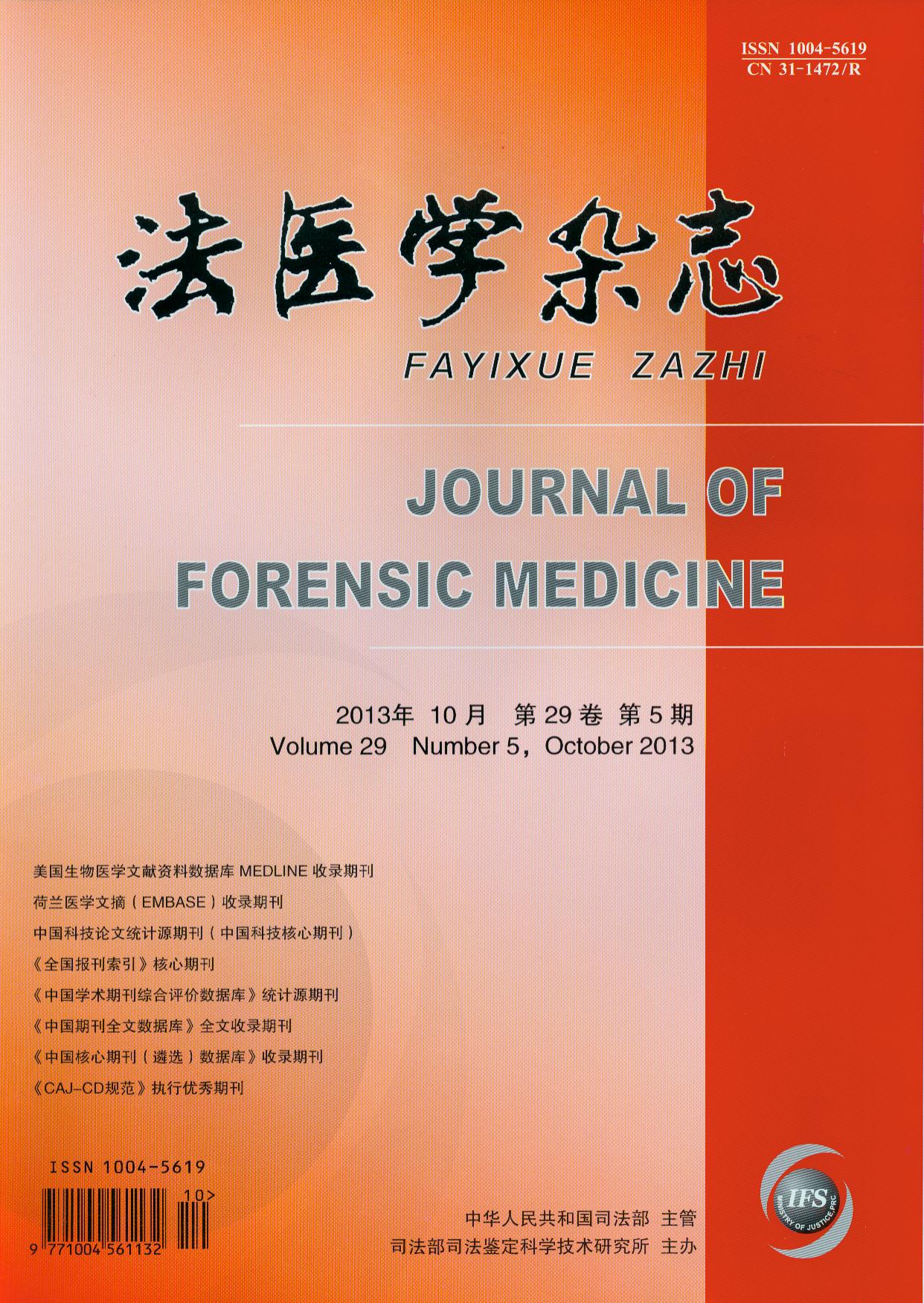|
|
Pathological Changes in Rats with Acute Dysosma Versipellis Poisoning
XU XIANG, XU MAO-SHENG, ZHU JIAN-HUA, ET AL.
2013, 29(5):
333-336.
DOI: 10.3969/j.issn.1004-5619.2013.05.004
Objective To observe the pathological changes of major organs in rats with acute Dysosma versipellis poisoning and investigate the toxic mechanism and the injuries of target tissues and organs. Methods Forty Sprague-Dawley (SD) rats were randomly divided into three experimental groups, which were given the gavage with 0.5, 1.0 and 2.0 LD50 doses of Dysosma versipellis decoction, and one control group, which was given the gavage with 1.0 LD50 dose of normal saline. The rats were sacrificed 14 days after Dysosma versipellis poisoning and samples including brain, heart, liver, lung, and kidney were taken. After pathological process, the pathological changes of the major organs and tissues were observed by light microscope and electron microscope. The experimental data were statistical analyzed by χ2 test. Results The observations of light microscopy: loose cytoplasm of neurons with loss of most Nissl bodies; swelling of myocardial cells with disappearance of intercalated disk and striations; hepatocellular edema with ballooning degeneration; and swelling epithelial cells of renal proximal convoluted tubule with red light coloring protein-like substances in the tube. The observations of electron microscopy: the structures of cell membrane and nuclear membrane of neurons were destroyed; cytoplasm of neurons, obvious edema; and most organelles, destroyed and disappeared. The mortalities of rats after acute poisoning of the four groups increased with doses (P<0.05). Conclusion Acute Dysosma versipellis poisoning can cause multi-organ pathological changes. There is a positive correlation between the toxic effect and the dosage. The target tissues and organs are brain (neurons), heart, liver and kidney.
Related Articles |
Metrics
|


